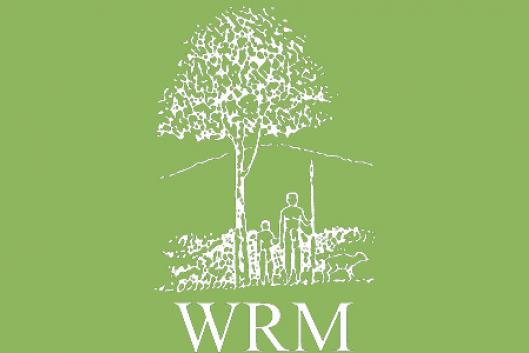The Gambia is a small (10,000 sq.km.) and economically poor country, facing a number of social and environmental problems. Among the latter, deforestation is probably the one that poses the greatest threat to both people and the environment. Until the early 1900s, the Gambia was covered by dense forests. In 1981 about 430.000 ha or 45% of total land area were classified as forest. In 1988 the figure had dropped to about 340.000 ha or 30% of land area. Additionally, the degradation of the forest condition is so severe that most closed forests have disappeared leaving only a tree and shrub savanna of poor quality.
It is therefore interesting to see how the Gambia –with very limited financial resources- is now addressing the problem within a people-centred approach. In this respect, the Forestry Department has developed the “Gambian Forest Management Concept” (GFCM), which guides all its activities.
A few quotes from the GFMC document serve to illustrate a major shift from mainstream forestry approaches:
- “The forest administration and individual forest officer have to see beyond the trees and become more concerned with people and the multiple-use potential of forest lands. The traditional approach of foresters needs to be widened in favour of involving the rural population in management and rational use of their forests”
- “Land-use decisions cannot be made from only the foresters point of view, but have to take into consideration population development, need for agricultural land, etc.”
- “The objective of forest management must be oriented more towards cattle grazing rather than to focus on mere protection or on the production of timber and other forest produce”.
- “The function of forestry staff has been changed from policemen to management partners”.
The GFMC puts the rural population at the centre of managing forests. Consequently, it follows participatory approaches so that local people are fully involved in planning, decision-making, organization and administration. The introduction of Community Forestry was in fact born out of the realization by the Department of Forestry of the futility of its efforts at protecting forests without the committed and willing involvement of the local community.
The introduction and application of community forestry has proven to be a process of confidence building and to take a long time in creating a sense of forest ownership among the villagers due to a profound mistrust about governmental actions and policies based on past experience.
One of the primary conditions a community has to fulfil before a Community Forest Management Agreement is entered into between it and the Department of Forestry is the creation of a Forest Committee at the village level. This Committee is responsible for all work organization at village level.
Basically, community forestry implementation distinguishes three phases: a preparatory phase during which the forest management by local communities is prepared; a preliminary phase during which the communities demonstrate their capacity in forest protection and management; and a consolidation phase during which the communities gain further managerial and technical forestry skills aiming at self-management.
Once the process is completed, a Community Forest Management Agreement (CFMA) is established between the community and the Department of Forestry, which grants permanent ownership rights over a clearly demarcated forest to the community or communities. With the CFMA the communities are entitled to keep the benefits derived from their forests. The only condition attached to the CFMA is to manage the forest resource according to a simple management plan.
The Gambian experience appeared to be so interesting, that the WRM secretariat decided that it would be useful to visit the country. We therefore got in contact with the Director of the Department of Forestry –Mr Jato S. Sillah- who kindly organized a number of visits to community forests as well as interviews with relevant forestry department staff. What we saw and heard basically coincided with the stated forestry policy.
We visited several community forests and talked with members of community forest committees who explained us the numerous benefits they were receiving from different forest uses. We had a meeting with the National Beekeepers Association where they explained how this activity helps in the prevention of forest fires and in increasing rural people’s incomes (see http://www.wrm.org.uy/bulletin/107/Gambia.html). We saw foresters without uniform interacting in equal terms with community members. We saw posters of community forests that said “grazing allowed”. Forestry staff explained the bureaucratic simplicity for achieving community forest status. From the Director of the Department of Forestry to the field staff everyone seemed truly convinced about the Gambian Concept and committed to its implementation.
It is of course true that a short visit to a few areas in a country can in no way be proof of anything. However, this experience appears to be a major step in the right direction and to have a potential for replication in other countries facing similar problems. More research is probably needed to assess the reality on the ground, but the conceptual framework not only makes sense from a forest conservation perspective but also from a social and economic one.
Article based on information from: Gambian Forest Management Concept (GFMC). Version 2. Draft, May 2001 http://www.wrm.org.uy/countries/Gambia/GambiaGFMC.pdf Community Forest Ownership: Key to Sustainable Forest Resource Management. The Gambian Experience http://www.wrm.org.uy/countries/Gambia/GambianExperience.html and trip to Gambia by Ricardo Carrere in June 2006
